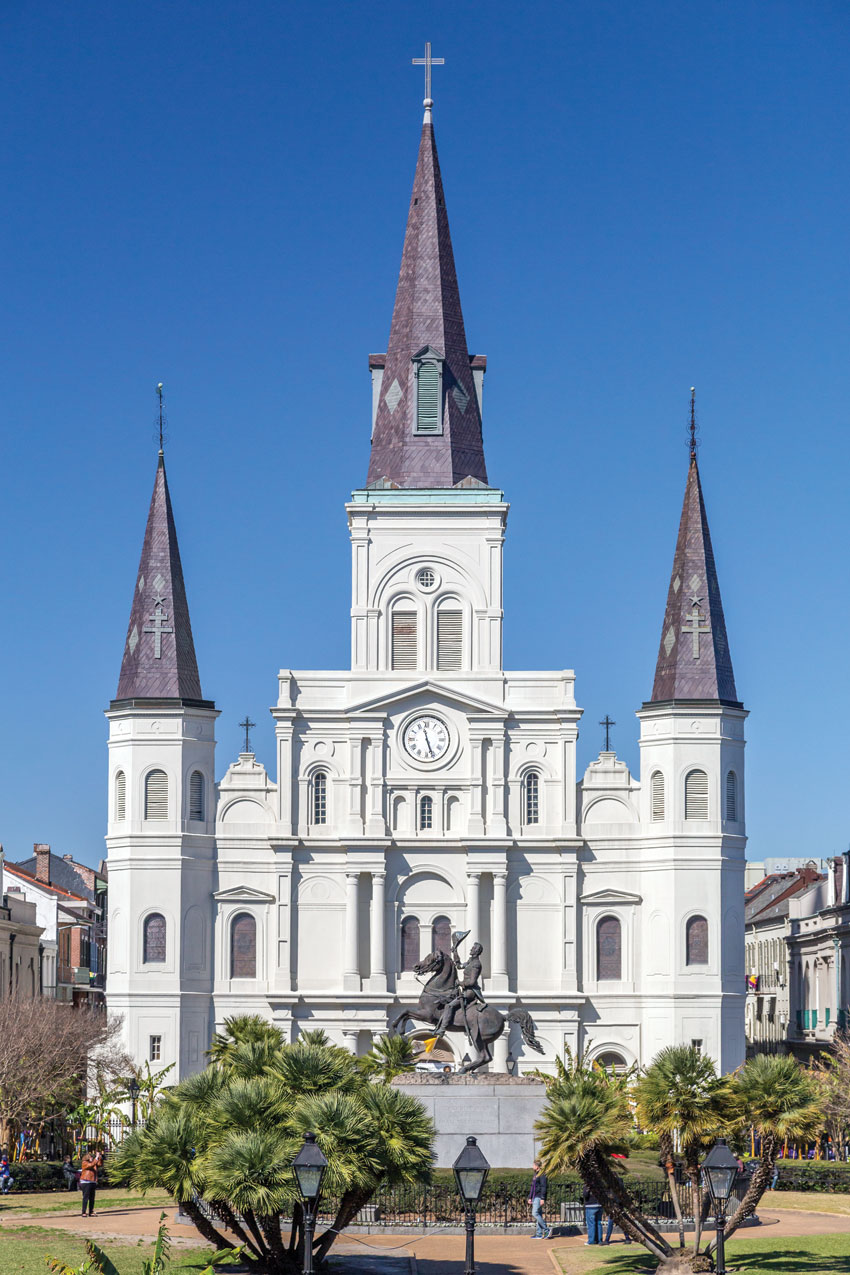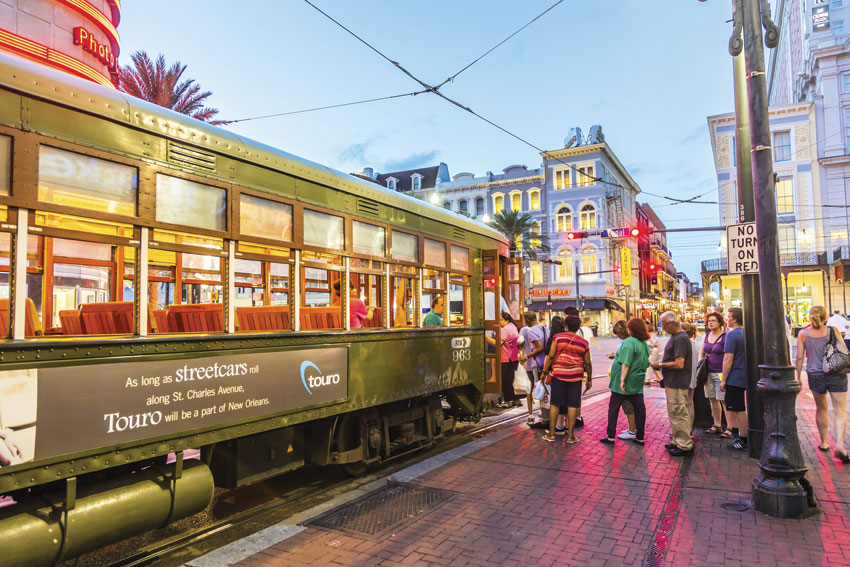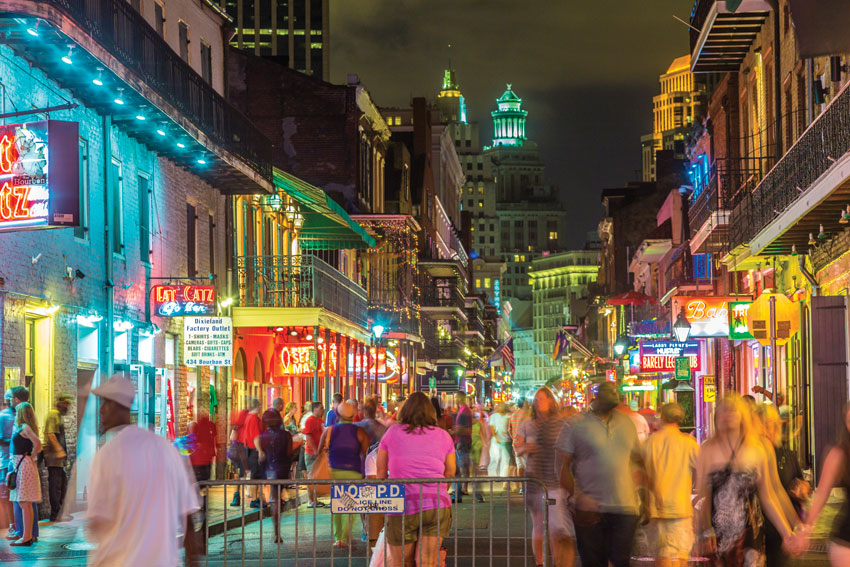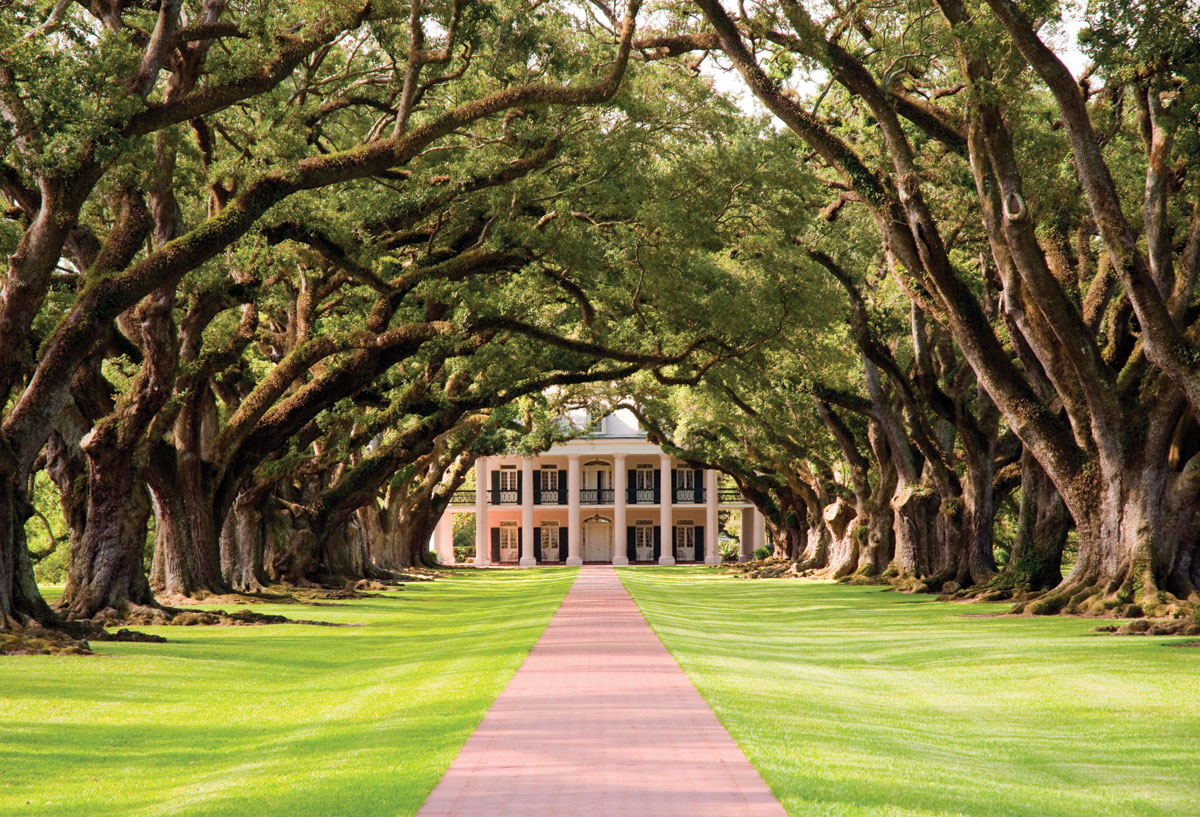NEW ORLEANS, OAK ALLEY & LOUISE
Hundreds-year-old lichen-laced oaks welcome you to the stately Oak Alley Plantation.
This a story of two cities that is one extraordinary city. New Orleans became my home for a year, thanks to the beneficence of the U.S. Navy and subsequent visits. It was a magic city, a foreign land unlike any other in the U.S., culturally, architecturally and botanically. When you live in “N’awlns,” its’ charisma lies in the varied neighborhoods and overlapping cultures that thrive there, writes our travel editor Al Auger. (Travel, #Siliconeer, @Siliconeer, #NewOrleans, #BourbonSt, #FrenchQuarter, #StLouisCathedral)
Post-Katrina, the world has been introduced to the Lower Ninth Ward; the French Quarter needs no such preamble, known by most natives as the Vieux Carré. Across the Mississippi River lies the virtually unknown village of Algiers. My wife and I lived on Prytania Street on the city-side edge of the renown Garden District. A block away is the iconic cemetery where Peter Fonda, Jack Nicholson, Dennis Hopper and friends tripped out on LSD. And, of course, nothing in the U.S. compares to Mardi Gras.
All of the above has been chronicled thousands of times in every media venue available to mankind. So, let me take you on a virtual tour of my New Orleans, as a self-appointed citizen of this rare urban-village as it changed into a brand new metropolis.
New Orleans in the mid-twentieth century was still the storied “urban- village,” much like the same-time San Francisco Bay Area. A conurbation made up of practically untouched neighborhoods shoulder to shoulder each with its own spirit and soul. The storied Lower Ninth Ward of New Orleans was a vital force of people that gave the world new music, an intrinsic art form, culture and attitude. The soul is its’ deeply etched history that lies in the people who create and sustain the spirit. When you enter New Orleans, you are now part of a place you will find nowhere else.
This is all and good when you are living in the city, no longer a visitor, but a short-term inhabitant. But, the human essentials take priority; again, it’s the discovery of the “little” things that make New Orleans so different such as the seemingly never-ending diversity of munching delights. Most days, for lunch I would escape the smothering bureaucracy of Naval procedures to the nearby Po’ Boy kiosk. For thirty minutes I would submerge myself in the joy of local oysters or sausage and Louisiana Hot Sauce stuffed in a large bun smoothed by a longneck Jax beer.
New Orleans has large blue collar working class that enjoy the sybaritic pleasures of exotic eating. While the French Quarter boasts expensive and famous restaurants such as Antoine’s, the Court of Two Sisters, Brennan’s and the like, the city is full of affordable sit down eateries serving much the same fare without the flair. All serving the basics, known the world over: gumbo, jambalaya, oysters and soft-shell crabs prepared so many ways you lose count. Two anchors of that gustatory populism were the strikingly beautiful Morrison’s Buffet and the notorious Red Rooster.
Morrison’s was a huge cavern of art-laden tile with row upon row of choices from the best local favorites to all-American offerings. The Red Rooster was an exotic and dark pleasures. You enter a long hall lined to its end with slot machines (although gambling was illegal at the time). On one side was a sit-down restaurant famous for gourmet dining. On the other a large buffet room charted for the hoi polloi. The Red Rooster was a main target of the Senator Estes Kefauver Crime Committee’s investigation into Mafia connections in the early 1950s.
New Orleans is a city of icons reaching back to the days of pirates and Stonewall Jackson. This magic metropolis-cum-village was a walker’s delight. St. Louis Cathedral overlooking Jackson Square is central to the city’s large Catholic population. Across the square sits the fabled Café Du Monde, famous for dark, rich coffee and puffy beignets blanketed with powder sugar.

The memories of that time is so deeply embedded it would take reams to chronicle them all. Some time later, back in civilian mufti, it was time to show my recent bride all this and more. Checking into the Hotel Monteleone is always a visual treat, from its charming lobby and the extensive services such as the roof pool, numerous watering holes, restaurants, etc. My choice of this remarkable 120-year-old family-owned hostelry was for many sybaritic reasons, but mainly for its location on the edge of the French Quarter. From its beginning in 1886 the Monteleone (the name of a small region of Serbia) has gone through evolution after evolution with it’s complete destruction and rebuild in 1954 that is today’s elegant experience. There is so much about the Monteleone it’s best to suggest you to check out it’s Website (see minutia) for descriptions and reviews.

With my partner, Louise, at my side we overlooked the Manhattan-ized central city, a virtual tear forming as we viewed the forest of sky-scraping architecture blotting out the true New Orleans I came to love. But, the city still had the finest urban transportation system negating the need of a vehicle to tour my old life stations and, of course, the never-changing symbols of the historic French Quarter. We gorged on Turtle soup at the Court of Two Sisters and smoothly tripped a sunset dancing in the courtyard. One night of jazz at the Preservation Hall Jazz emporium and experiencing the walk-away drink windows.

A new occurrence for both of us was to rent a small car and head to St. James Parish and the historic plantation homes. One doesn’t go plantation schlepping without a stop at the history-laced Oak Alley Plantation. Skirting the Mississippi River on the Great River Highway is worth the trip alone. The walk alone under the arch of hundreds-year-old oak trees to the stately plantation house is one never to be forgotten. If you have seen Gone With the Wind, you’re anticipated values are set; you won’t be disappointed. There doesn’t seem to be a chair, a table or sofa that doesn’t belong. The staff are all dressed in the fashions of the day.

Three days left in New Orleans and every memory of those days so many years ago have been relived or remained for Louise. No matter the burden of giant buildings reaching for the sky and an oversize sports muffin, there’s still the Po’Boys and the enduring flavors of Cajun cooking , music everywhere, dancing at the Court of Two Sisters and lounging in the lingering ethereal pleasures of the Monteleone. A visit to this enchanted city is to be taken with repose; relax as you cruise what’s around the next corner. Don’t “see” what has enveloped you, absorb the milieu. And remember what your new N’awlns friends told you: “Y’all come back, Y’heah?”
MINUTIA
Hotel Monteleone
214 Royal St.
New Orleans, LA 70130
866-338-4684
Oak Alley
3645 Highway 18 (Great River Highway)
Vacherie, LA 70090
225.265.2151
800.44ALLEY


